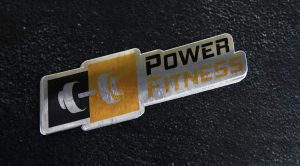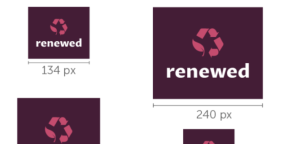Are you looking to create a strong brand identity for your business? One of the key components of any brand is its logo. A well-designed logo can be the face of your brand, and it’s important to ensure that it’s versatile and adaptable enough to be used in a variety of settings. That’s where logo variations come in.
Logo variations are different versions of your primary logo that can be used in different contexts. They can include variations in color, size, format, and more. By creating a range of logo variations, you can ensure that your brand is easily recognizable across all platforms, from social media to print materials.
But what types of logo variations should you create? Experts suggest that there are four key variations that every brand should have: primary, stacked or secondary, submark, and favicon. Each of these variations serves a different purpose and can be used in different contexts to ensure that your brand is always represented in the best possible way. In the following article, we’ll explore each of these variations in more detail and provide tips on how to create them effectively.
Importance of Logo Variations
Having a well-designed logo is essential for any business, but did you know that having logo variations is just as important? Logo variations are alternate versions of your primary logo design that can be used in different settings, such as social media images, websites, business cards, and more. Here are a few reasons why having logo variations is crucial for your brand:
1. Consistency
Logo variations allow you to maintain consistency across different mediums and platforms. By having different versions of your logo that are tailored to specific sizes and shapes, you can ensure that your brand looks cohesive and professional no matter where it appears.
2. Adaptability
Different mediums and platforms have different requirements when it comes to logos. For example, a square logo may work well on social media platforms like Instagram, but a rectangular logo may be better suited for a website header. By having logo variations that are optimized for different settings, you can ensure that your brand is adaptable and can be used effectively in any context.
3. Recognition
Having consistent and recognizable branding is key to building brand recognition and loyalty. By using logo variations that are consistent with your primary logo design, you can ensure that your brand is easily recognizable across different platforms and mediums.
In summary, having logo variations is essential for maintaining consistency, adaptability, and recognition across different mediums and platforms. By taking the time to create logo variations that are tailored to specific settings, you can ensure that your brand looks professional and cohesive no matter where it appears.
Types of Logo Variations
When it comes to creating a logo, you need to consider various factors such as color, size, shape, and typography. These factors play a crucial role in creating a unique and versatile logo that represents your brand. Here are some of the most common types of logo variations:
Color Variations
Color is one of the most important elements of a logo. It can evoke emotions, convey messages, and make your brand more recognizable. Therefore, it’s essential to have different color variations of your logo to use in different contexts. For example, you may need a full-color version of your logo for your website and a one-color version for printing on merchandise.
Size Variations
Another important factor to consider when creating a logo is size. Your logo needs to be scalable, so it looks good whether it’s displayed on a small business card or a large billboard. Therefore, you need to have different size variations of your logo. For example, you may need a horizontal version of your logo for your website header and a square version for your social media profile picture.
Shape Variations
The shape of your logo can also affect its versatility. A logo with a complex shape may not be easy to use in different contexts. Therefore, it’s essential to have different shape variations of your logo. For example, you may need a circular version of your logo for your website favicon and a rectangular version for your email signature.
Typography Variations
The typography of your logo can also affect its versatility. A logo with a unique font may not be easy to read in small sizes. Therefore, it’s essential to have different typography variations of your logo. For example, you may need a bold version of your logo for your website header and a thin version for your business card.
In conclusion, having different logo variations is crucial for creating a versatile and recognizable brand. By considering factors such as color, size, shape, and typography, you can create a logo that looks good in different contexts and represents your brand effectively.
Creating Logo Variations
When creating a logo for your brand, it’s important to consider creating variations of your primary logo design. This will allow your brand to be versatile and adaptable in different settings. Here are some tips on how to create logo variations for your brand.
Design Principles
When designing logo variations, it’s important to keep in mind the design principles of your primary logo. This will ensure that your variations remain cohesive and consistent with your brand. Here are some design principles to consider:
- Color: Use the same color palette as your primary logo to maintain consistency.
- Typography: Use the same font or a similar font to your primary logo to maintain consistency.
- Shape: Use the same or similar shapes to your primary logo to maintain consistency.
- Style: Use the same or similar design style to your primary logo to maintain consistency.
Using Design Software
Design software can make it easier to create logo variations. Here are some tips on how to use design software to create logo variations:
- Duplicate your primary logo: Use the duplicate as a starting point for your variations.
- Experiment with color: Try different color variations to see what works best for your brand.
- Experiment with typography: Try different fonts and font sizes to see what works best for your brand.
- Experiment with shape: Try different shapes and sizes to see what works best for your brand.
- Experiment with style: Try different design styles, such as flat design or material design, to see what works best for your brand.
By following these tips, you can create logo variations that are cohesive, consistent, and recognizable in different settings.
Implementing Logo Variations
When it comes to implementing logo variations for your brand, it’s important to understand where and when to use them. Here are some tips to help you effectively use your logo variations.
On Different Platforms
Different platforms have different requirements for logos. For example, a logo that looks great on your website may not be suitable for social media platforms. Here are some tips to help you use your logo variations on different platforms:
- Social media: Use a simplified version of your logo that is recognizable even at small sizes. This could be a wordmark or a simplified version of your logo.
- Print materials: Use a high-resolution version of your logo that looks great even when printed in large sizes. Make sure the colors are consistent across all print materials.
- Website: Use your primary logo on your website, but also consider using a simplified version of your logo in the header or footer.
For Different Events
Different events may require different versions of your logo. For example, a trade show booth may require a different logo than a charity event. Here are some tips to help you use your logo variations for different events:
- Trade shows: Use a larger version of your logo that is visible from a distance. Consider using a logo with a tagline to help explain your brand.
- Charity events: Use a logo that is more focused on your brand’s charitable efforts. This could be a logo variation that includes a heart or other symbol of giving.
- Product launches: Use a logo that is focused on your new product. This could be a logo variation that includes the product name or a symbol related to the product.
By using your logo variations effectively on different platforms and for different events, you can create a consistent and recognizable brand image.
Case Studies of Successful Logo Variations
Logo variations have become an essential aspect of branding in today’s world. They offer adaptability, recognition, and innovation to a brand’s visual identity. Here are some case studies of successful logo variations:
Coca-Cola
Coca-Cola is a brand that has been around for over a century. The company has had many logo variations over the years, but one of the most successful ones was introduced in 1985. The new logo was designed to be more contemporary and dynamic, with a new font and a more vibrant red color. The logo was a hit, and it helped Coca-Cola to maintain its position as one of the world’s most recognizable brands.
Google is another brand that has had many logo variations over the years. In 2015, the company introduced a new logo that was designed to be more modern and playful. The new logo featured a sans-serif font and a more vibrant color palette. The logo was a hit, and it helped Google to maintain its position as the world’s most popular search engine.
Apple
Apple is a brand that has always been known for its sleek and minimalist design. In 1998, the company introduced a new logo that was designed to be more modern and streamlined. The new logo featured a monochromatic color scheme and a more simplified design. The logo was a hit, and it helped Apple to maintain its position as one of the world’s most innovative and stylish brands.
Nike
Nike is a brand that has always been associated with athleticism and performance. In 1995, the company introduced a new logo that was designed to be more dynamic and powerful. The new logo featured a bold and italicized font, with a more prominent swoosh symbol. The logo was a hit, and it helped Nike to maintain its position as one of the world’s most recognizable and successful sports brands.
FedEx
FedEx is a brand that has always been associated with speed and efficiency. In 1994, the company introduced a new logo that was designed to be more modern and streamlined. The new logo featured a bold and italicized font, with a more prominent arrow symbol. The logo was a hit, and it helped FedEx to maintain its position as one of the world’s most efficient and reliable shipping companies.
Logo variations have proven to be an effective way for brands to maintain their position in a constantly changing market. By adapting to new trends and styles, brands can continue to stay relevant and recognizable to their customers.
Conclusion
Congratulations! You now understand the importance of having logo variations for your brand. By having multiple versions of your logo, you can ensure that your brand remains consistent and recognizable across various platforms and mediums.
Remember, logo variations should not be drastically different from your primary logo design. Instead, they should be rearranged versions that maintain the core elements of your brand. This allows for flexibility while still maintaining a strong brand identity.
When creating logo variations, consider the different settings and circumstances in which your logo will be used. A social media image may require a different shape or size than a business card or website. By having multiple logo variations, you can ensure that your brand is adaptable to any situation.
In summary, logo variations are an essential part of any brand’s visual identity. They allow for flexibility and consistency, ensuring that your brand is recognizable in any setting. So, go ahead and create those logo variations – your brand will thank you for it!
Barry Edwards is a digital marketing expert with a deep understanding of content strategy, logo, and branding principles. Holding a Bachelor’s degree in Marketing from Beaconhill College, he offers valuable insights on digital marketing trends and strategies through his writing. Follow Barry’s work to stay updated on the latest in online marketing and branding.


